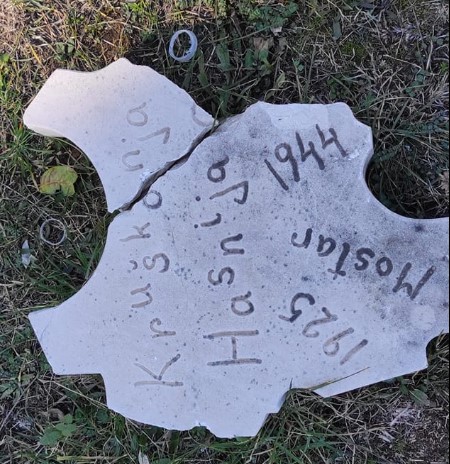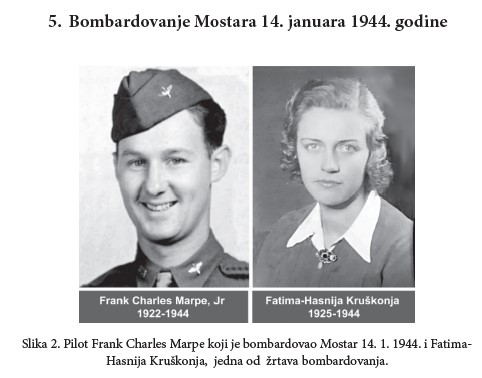
brochure “Partizanski spomenik u Mostaru” (1980)
book “Spomenica Mostara 1941-1945.”
another document or proof of the memorial stone (e.g., a photograph).
Hasnija O. KRUŠKONJA
HASNIJA FATIMA KRUŠKONJA, daughter of a railway worker OMER and peasant woman named NAZA née Behram, born in Mostar on March 24, 1925. A seamstress, member of SKOJ (League of Communist Youth of Yugoslavia) since 1942.
Her father’s favorite, she lived in the Carina neighborhood of Mostar. A student at the Girls’ School, where an “Italian couple, members of the illegal resistance movement, influenced the girl to join the organization.” An illegal activist who “only wore her mother’s headscarf when it was necessary to fill bags with leaflets, bombs, and ammunition and carry them to the forest near Mostar to deliver them to the contact person and send them further to the partisans.” She worked at the Narodna Uzdanica Convent (children’s orphanage) on Srednja Street in Mostar (now Braće Fejić Street). Killed during an Allied bombing on January 14, 1944.
From family memories:
“When my father once lifted the cushion on the sofa and found a stack of leaflets with anti-fascist propaganda slogans underneath, he pulled his hair and said, ‘They will kill us all.’ A few days later, the whole family was involved in the underground resistance, and my late grandmother, a little girl at the time, carried leaflets in her shoes and took them to the warehouses. (…) To conceal her activities, which involved carrying weapons and leaflets and organizing secret meetings in their house in Carina, Hasnija also worked at the children’s orphanage opened by the Germans. Ironically, she was killed by an Allied bomb, along with the children to whom she had just served a meal.”
The night before the bombing, there was a meeting of underground resistance members from Carina at the Kruškonja house. Ammunition was hidden in the shed under the firewood, which Hasnija was supposed to deliver to her contact on January 14. That morning, she was at the Convent distributing breakfast to the children. The Convent was directly hit by a 227 kg bomb. Besides Hasnija, several parentless children who were housed there were killed, and a total of 24 people died in Mostar during the bombings those days.
Hasnija’s father, Omer, immediately rushed to the Convent with his son Alija, frantically searching for Hasnija in the ruins. They carried her body to the Carina Harem and buried her there without a funeral or anyone present. After the war, a man claimed that his wife was buried there, so to this day, Hasnija’s grave remains unknown.
It is estimated that 86 citizens of Mostar died as a result of Allied airstrikes on military targets. The majority of casualties occurred in 1944, most likely on January 14.
Dolores Veledar-Perić, članak “Moja heroina antifašističke borbe” ; Ahmed Kurt, Savezničko bombardovanje Mostara u Drugom svjetskom ratu 1943-1945., Hercegovina br. 18; https://mostarski.ba/ahmet-kurt-bombardovanje-mostara-14-1-1944/ ; Konjhodžić, Mahmud (1981): “Mostarke”: fragmenti o revolucionarnoj djelatnosti i patriotskoj opredjeljenosti žena Mostara, o njihovoj borbi za slobodu i socijalizam, Opštinski odbor SUBNOR-a Mostar; grupa autora: Spomenica Mostara 1941-1945.
Photo: family archives (Sefić/Silić family, i.e. Ekrem Silić, who is the son-in-law and husband of the deceased niece of Hasnija); https://znaci.org/00001/39.pdf; Photo of the memorial plaque: S. Demirović.
Do you have more information about this fighter? Share your stories and photographs. Let’s keep the memory alive!





